Ducati Superquadro Mono
Ducati are not holding back when it comes to breaking new ground. This week we already had the news that Ducati were about to take on the world of motocross, now overnight they have announced a new 659 cc singe-cylinder powerplant that they claim makes 77.5 horsepower in road trim, rising to 84.5 with a racing exhaust. The compression ratio is to 13.1:1.
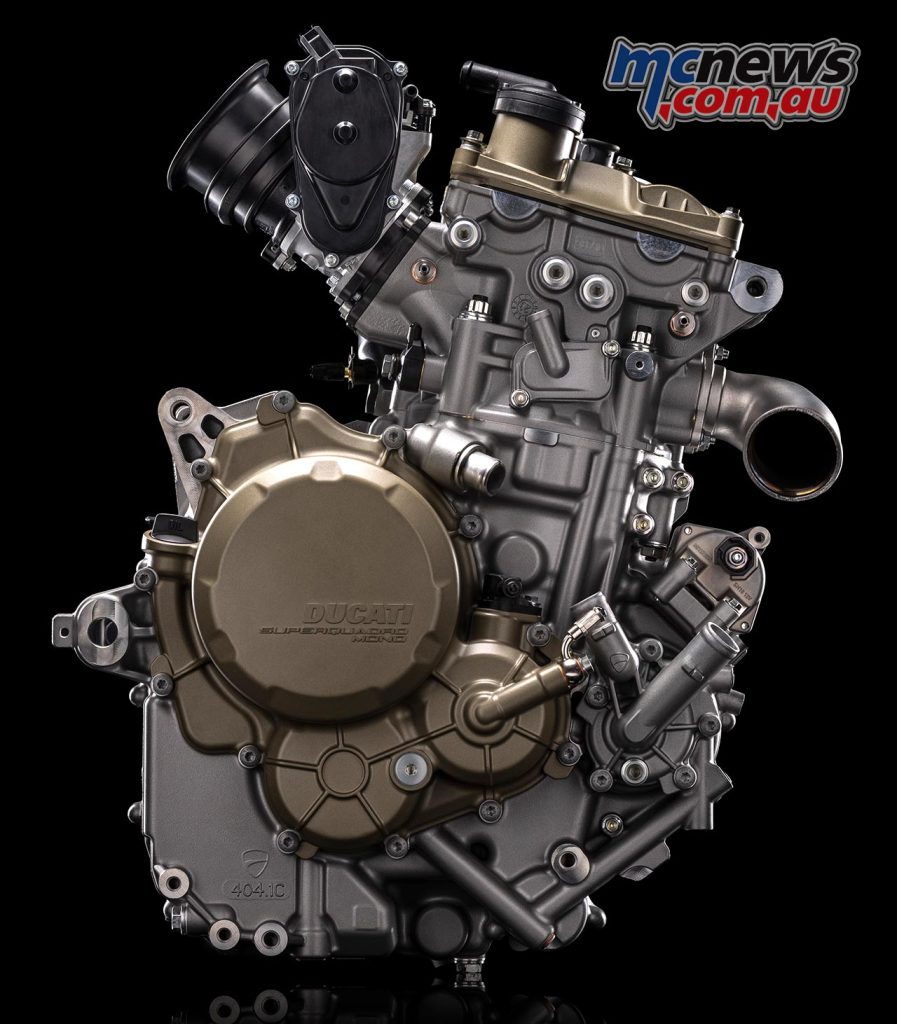
The obvious yardstick in this segment comes from just over the border in Austria, KTM’s 693 cc single introduced in 2019. This sees use in the KTM 690 Enduro R and Husqvarna 701 models. It is rated out of the box at 74 horsepower and really did break new ground for single-cylinder engines, Trev raved about it after first sampling it in Portugal almost five years ago.
Ducati have some form with big singles in sexy sporting roadbikes. Check out our feature on the Supermono here. A 1992 model developed for what seemed then a new and promising ‘Sounds of Singles’ race category. Claudio Domenicali (now Ducati’s CEO), designed the tubular steel chassis which was constructed at Cagiva’s Varese factory. The swingarm was by Verlicchi and Pierre Terblanche penned the fabulous bodywork.
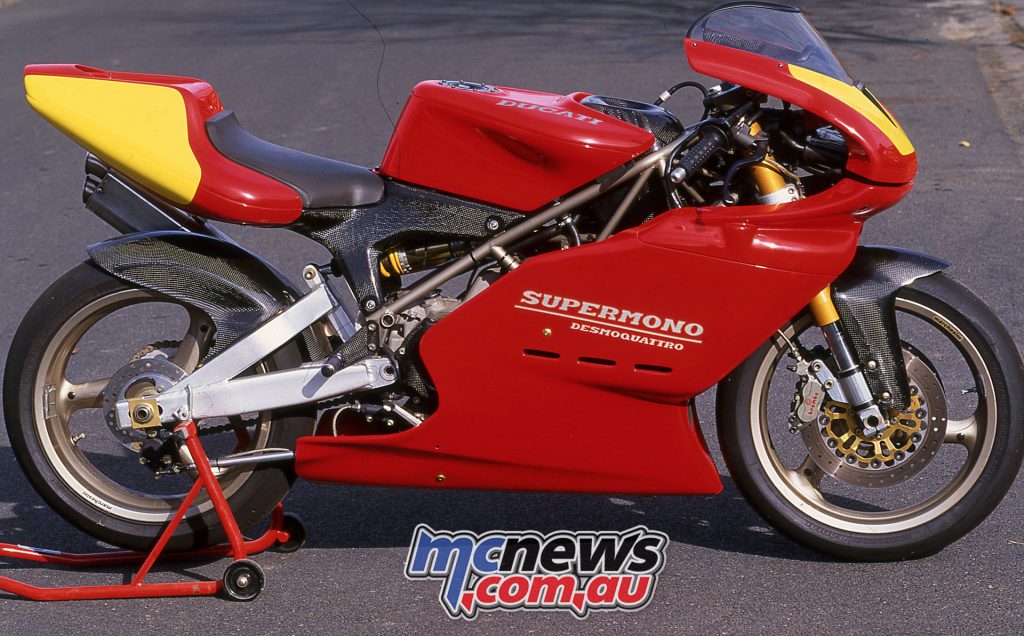
Ultimately it didn’t make it to the road, but Alister Wager in the UK did buy a swag of components from Ducati and actually did produce a limited run of road going Supermono Strada models, you can find that yarn here.
Originally the Supermono was 487 cc as shown at the 1992 Cologne Show while the first run of 40 production racing bikes came on line the following year displacing 550 cc, followed by a further 27 bikes with 572 cc engines.
For the Supermono Massimo Bordi’s ingenious concept saw him basically using the bottom half of the 888 Corsa V-twin with the vertical cylinder’s (modified) conrod connected to a pivoting lever which rotated on a pin fixed to the crankcase. This time around Ducati have done something similar, deriving this new Superquadro Mono 659 cc engine from the 1285 cc twin-cylinder engine utilised in the Panigale 1299.
The name Superquadro comes from the extreme ratio between bore and stroke. On the Superquadro Mono this ratio is equal to 1.86 and is the most extreme in the category thanks to a stroke of just 62.4 mm.
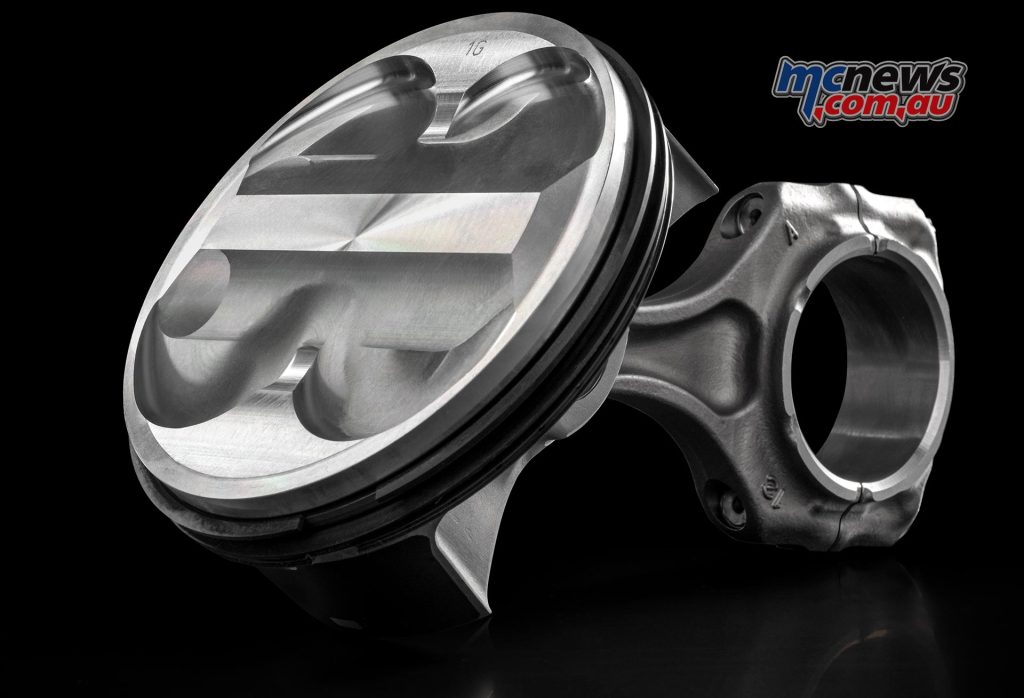
The record bore of 116 mm allows the adoption of large diameter valves and Ducati use their trademark desmodromic actuation system on the Superquadro to achieve extreme lift levels.
Ducati claim the Superquadro Mono delivers a maximum power of 77.5 hp at 9,750 rpm, and is capable of reaching 10,250 rpm. A couple of ponies more than the KTM’s benchmark big single, and around 1000 rpm more. However with the optional Termignoni exhaust (for off-road use), Ducati claim an output of 84.5 hp at 9,500 rpm.
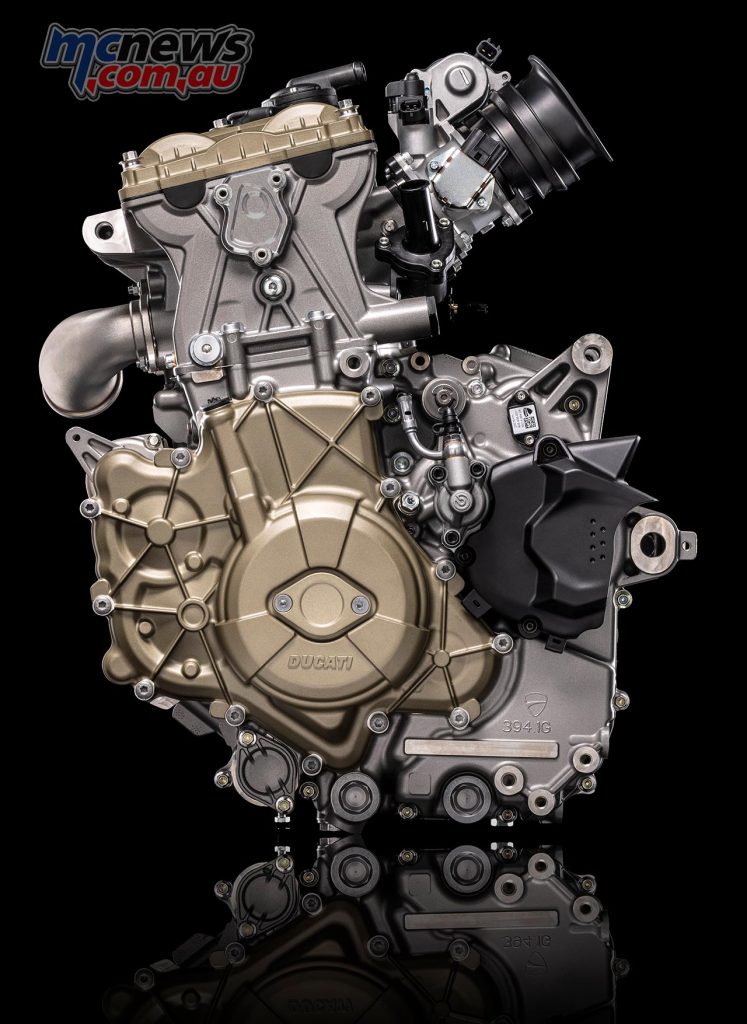
Ducati claim a maximum torque value of 63 Nm at 8,000 rpm. That is around 15 per cent less than what KTM claim for their current LC4. The Austrians rate their LC4 with 74 Nm at 6500 rpm.
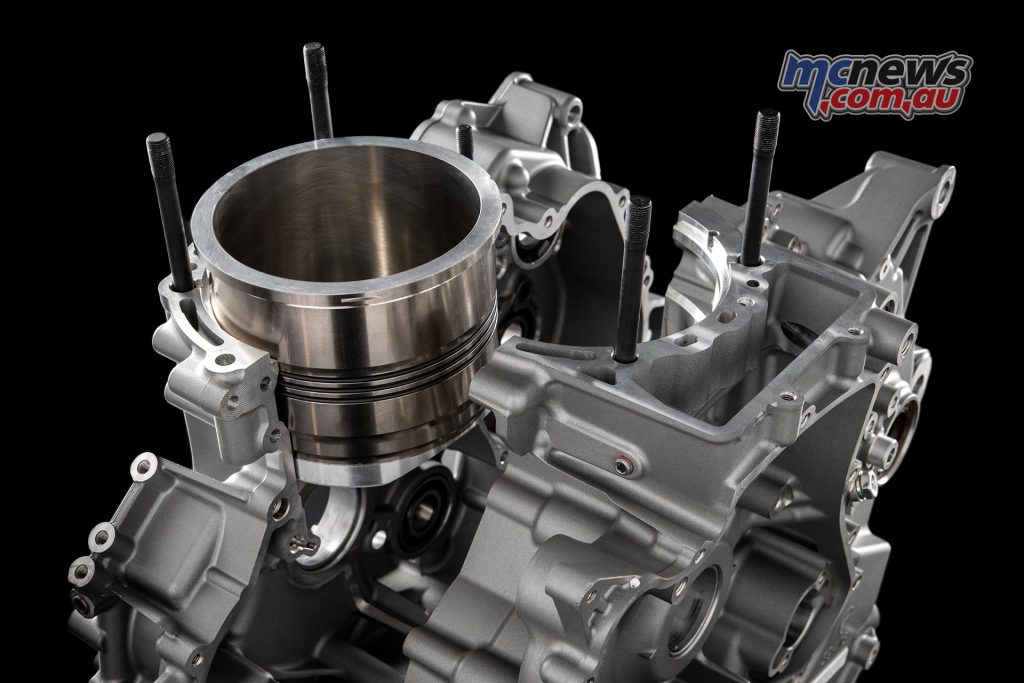
Fuel is fed through a single oval-section throttle body with an equivalent diameter of 62 mm, with an under-throttle injector controlled by a ride-by-wire system that offers three different Power Modes (High, Medium, Low) to adapt the delivery of the engine to different riding situations.
The die-cast engine crankcases integrate the water jacket around the cylinder barrel, made as on the 1299 Superleggera in aluminium rather than steel, with benefits in terms of weight and cooling due to the thinness of the walls. This solution also allows the head to be fixed directly to the crankcase, obtaining a much more compact engine with the same rigidity of the structure.
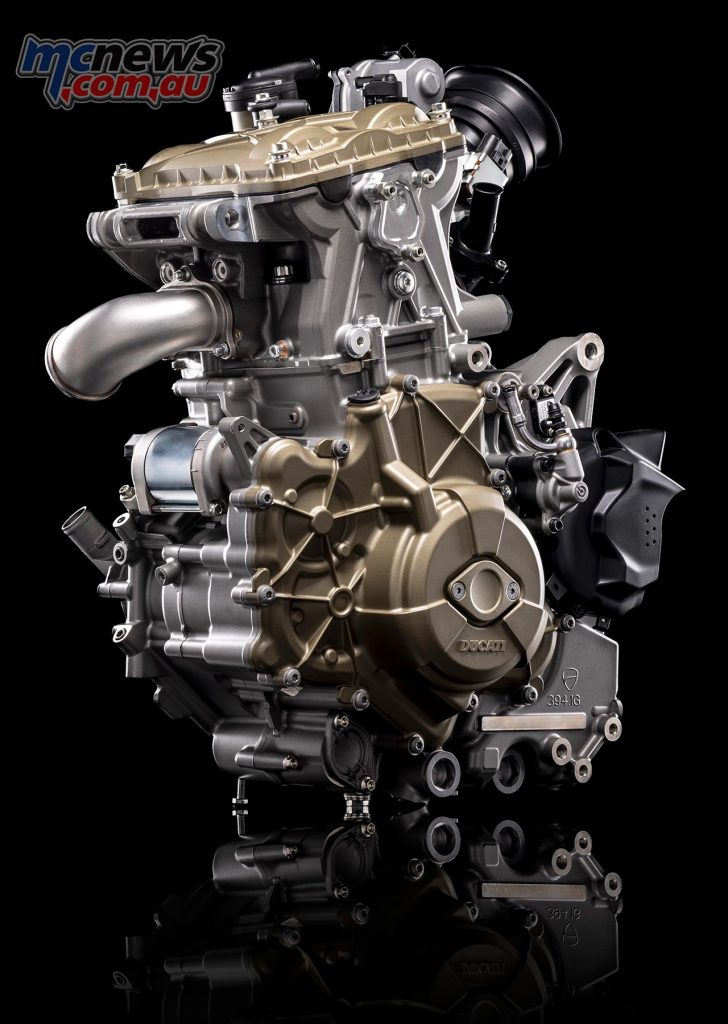
The clutch, alternator and head covers are made by casting magnesium alloy, again to reduce the weight of the engine to a minimum while guaranteeing high mechanical resistance.
The crankshaft is asymmetrical and mounted on differentiated main bearings to contain the weight. Engine balancing is guaranteed by the presence of two balancing countershafts (one front and one rear) mounted on ball bearings inside the crankcase and controlled by gears. The countershafts also control the water and oil pumps.
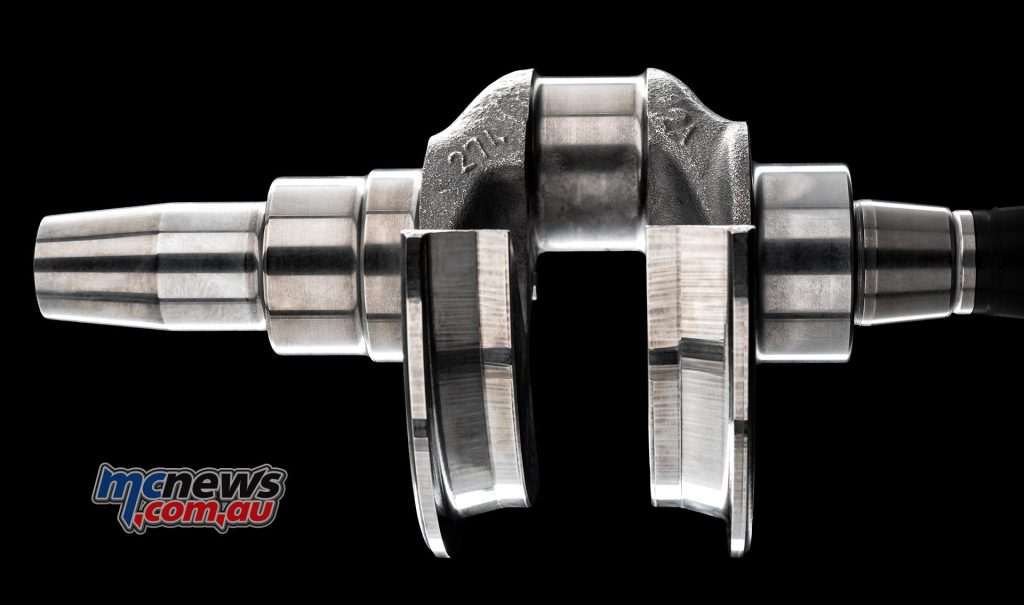
The layout of the two countershafts, placed on the side of the crankshaft, allows the first order inertia forces to be completely balanced without introducing further unwanted forces or moments.
The Superquadro Mono relies on two lobe pumps, a delivery pump which ensures efficient lubrication of the engine, and a recovery pump, located in the connecting rod compartment and which takes the oil from the side compartments of the alternator and clutch covers in order to reduce the friction losses of the lubricant with the moving parts. This pump, together with a valve placed in the blow-by circuit, reduces crankcase pressure and pumping losses.
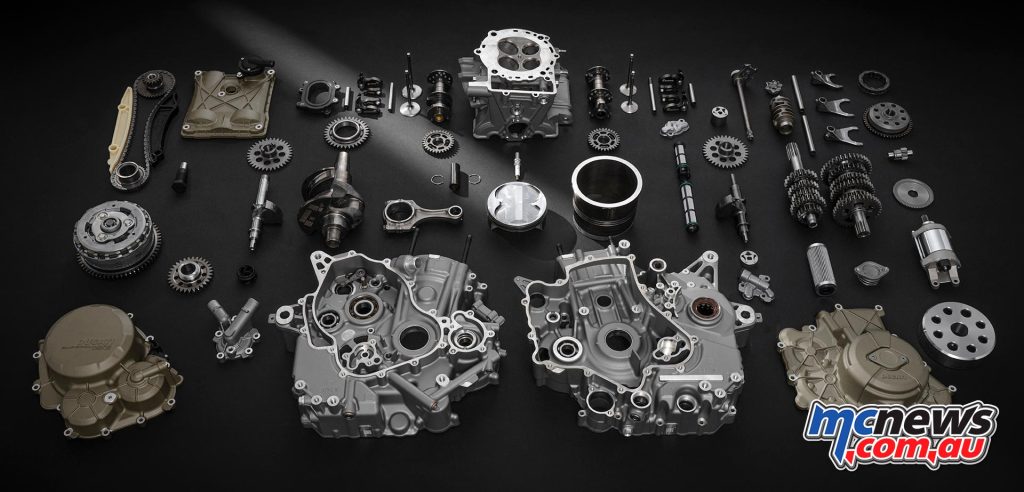
A six-speed gearbox features along with a clutch is in an oil bath with progressive interlocking hydraulic control, basically a slip-assist system is how we read it.
The gearbox can be equipped with Ducati Quick Shift (DQS) Up & Down. In this application, the DQS relies on a magnetic hall effect sensor and not the traditional load cell to improve accuracy and reliability.
The Superquadro Mono will equip a bike that will be revealed late next week at EICMA. While we would expect this new engine to power a new lightweight adventure bike with spin-offs into supermoto and other model lines, we suspect that the first cab off the rank to put this exciting new powerplant to use may indeed be a road bike somewhat similar to the Supermono of the early 90s. Time will tell… New Sound of Singles racing class interest anyone….?
Ducati Superquadro Mono at a glance
- 659 cc vertical single-cylinder engine
- Bore x stroke 116 x 62.4 mm
- Compression ratio 13.1:1
- Maximum power 57 kW (77.5 hp) at 9,750 rpm – 84.5 hp at 9,500 rpm with Termignoni racing exhaust
- Maximum torque 63 Nm (6.4 Kgm) at 8,050 rpm – 6.8 Kgm with Termignoni racing exhaust
- Aluminium cylinder barrel
- Euro 5+ homologation
- Mixed chain-gear Desmodromic distribution with double overhead camshaft, 4 valves per cylinder. 46.8 mm titanium intake valves, 38.2 mm exhaust valves.
- Asymmetrical crankshaft mounted on differentiated diameter main bearings
- Double balancing countershaft with control function of the water and oil pumps
- Multi-disc oil-bath clutch, servo-driven and with anti-hopping function
- Semi-dry sump lubrication with delivery pump and recovery pump
- Fuel feed via oval section throttle body with an equivalent diameter of 62 mm
- Six-speed gearbox with the possibility of fitting the Ducati Quick Shift (DQS) Up & Down
- Oil change set at 15,000 km
- Check and eventual adjustment of valve clearance set at 30,000 km























